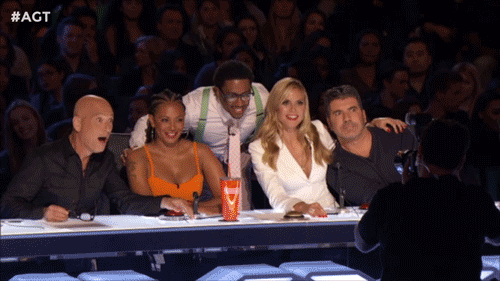
Dec
Event Photographers and the “Pretty People” Problem
[responsivevoice_button voice=”UK English Female” buttontext=”Listen to Post”]
I often go out to events by myself, so I expect to strike up conversations with anyone. A few months ago, I met fashion designer Christian Siriano at legendary DC boutique Rizik’s. He’d recently published a book, and we were gabbing about the release date.
Just when a friend he recognized introduced herself, an event photographer hired to capture the event swooped in to ask for a group photo. Without me, of course.
As I scuttled away in embarrassment, it’s a feeling I am all too familiar with. When you’re included in a group photo at an event, you’re told: “You’re important. You matter.”
And when you’re excluded, it hurts.
But this isn’t just about my sore ego. People like me hire event photographers.
I often design and promote events using photographs from previous events. It informs and encourages potential guests what they’ll have to look forward to. Therefore, my opinion of how photographers behave on-site, who they interact with, and what they capture will determine if they get hired again.
”Instead of hiring a photographer for lighting or composition, hire someone who knows how to walk into a room, disarm unsuspecting guests, make them feel comfortable, then make them feel noticed and included.
People think photography is point-and-shoot. But photography is active exclusion. For every person you see on camera, there’s a person you don’t see. It’s up to us: graphic designers, art directors, and communications strategists to point out these discrepancies, and be clear and specific about wanting more.
At my last job, I was photo editor in charge of managing our company’s large resource of event photos, logos, and graphics. Part of this challenge was editing down the photos. But another challenge was making a clear specific case for who and what I wanted to see on camera: people who looked happy and engaged at a workshop, people of varying ages and body types, people of various skin tones, more Latinx American students, more Asian American students, more low-income White students, and promoting the idea that “diversity” does not mean, “no White people.” These were things I had to actively advocate for at a nonprofit committed to low-income students and students of color.
”People think photography is point-and-shoot. But photography is active exclusion. For every person you see on camera, there’s a person you don’t see.
This essay is for event planners, communications/art/creative directors who hire event photographers and are invested in practicing good ethics. Instead of hiring someone who can hold an expensive camera steady, look at who they’re capturing: What are the culture and ethnic diversity of the audience? If the event dominates a specific race, that’s fine. Don’t tokenize the minority of people at the event for the sake of your “diversity photo.” Instead, think of: How young or old is everyone? Are people dressed in a variety of styles? Are men and women photographed equally? Do people look happy and engaged to be at the event? If you were at the event, how well-represented was everyone? If it’s a music festival, why did the event photographer bring back a bunch of images of pretty young women, when you saw men, women, and gender non-conformists? If your photographer receives direction or feedback poorly, don’t hire that them again. If your photographer is only interested in photographing inanimate objects or pretty people don’t them again.
Instead of hiring a photographer for lighting or composition, hire someone who knows how to walk into a room, disarm unsuspecting guests, make them feel comfortable, then make them feel noticed and included.
Ask and demand better.


